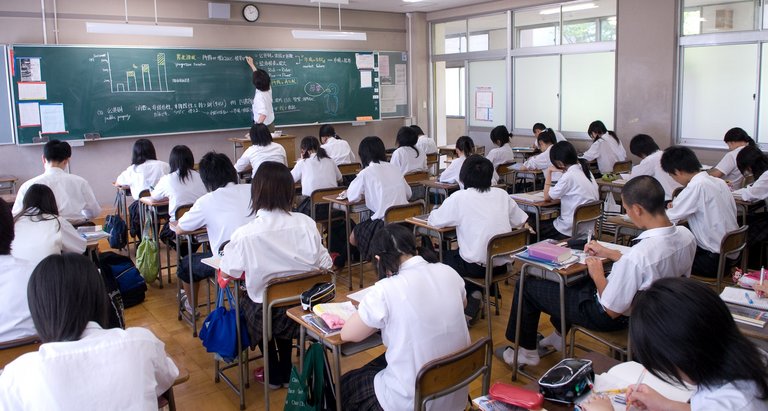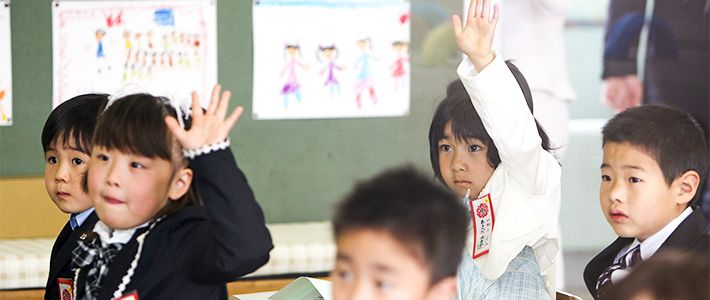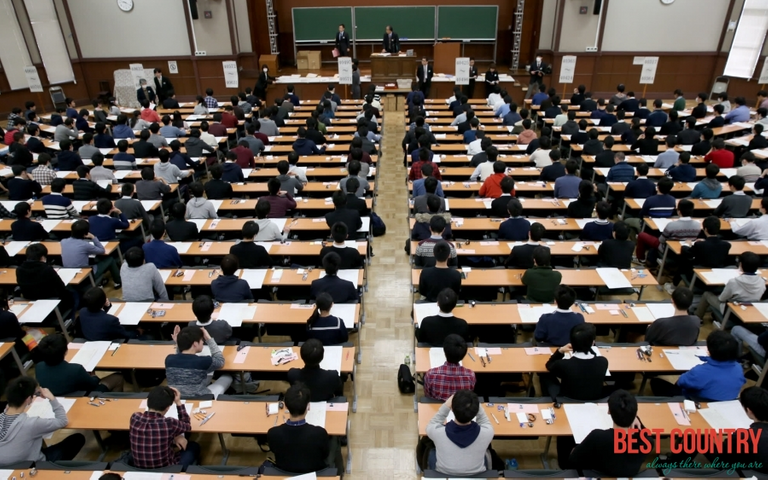How did Japan reach the top of education?
It was a visit to one of my relatives to do a PhD in Japan
And through which he explained to me a very strange and fruitful education system which I will try to communicate to you in one or two articles.
There is a great debate in Japan about a type of educational system called "education with stuffing" which is programs and courses held by educational centers about 36 thousand students in the elementary stage in about 84 locations in the country and this type of school had appeared for the first time in Japan four decades ago Almost. The “stuffing” schools continued to perform their duties without anyone paying any attention to the dangerous role they play in the educational revolution currently taking place in Japan.
Educational experts and researchers are studying the impact of these schools after entering all levels of education.

Its system and method
For example, the teacher asks the student to read the texts, some of which contain difficult letters that he has not seen before, and despite the difficulty of the dose and request it for intense attention and focus, students sitting in the front of the class are quick to raise their hands and initiate to provide the answers that the teacher gives while others do not stop On throwing jokes, students live in an atmosphere of life and fun, and they are ready to participate in answering the questions that the teacher does not stop asking. After the end of the rest period in which they eat lunch, students return to the second class in the subject they are studying, any changes commensurate with the winds of change There is a growing concern among parents, businessmen and educational researchers that the education system in Japan will deteriorate in terms of its quality, value and levels if it comes to the level of random, unexplained changes.
Statistics say that parents are more likely to spend more on educational services provided by private institutions in pursuit of a better quality of education. Schools of education with padding witness an economic boom, but current estimates say that total investment in that industry has reached 12 billion dollars.

with or against
However, opinions vary regarding the value of this type of education. Many, especially parents, see that it has become an integral part of the Japanese social and educational life that qualifies the student to enter university or gain the skills and knowledge that are in greater demand in the labor market.
On the opposite side, the critics' wing sees that these schools cause many psychological problems for students, including increased psychological and nervous pressures due to the large number of exams that the student runs a week and the high rates of suicide among students in the event of failure, as well as high waves of violence in secondary schools, but despite the severity of the criticisms directed To her from time to time, the Ministry of Education recently recognized the vital role these schools play in achieving high academic achievements for Japanese students.
Despite the prosperity of education schools with stuffing and its popularity on the commercial level, the head of the largest private school in Japan is concerned that these schools will not be able to keep pace with the radical developments in the future. The more customers, the better, there are other considerations that are more serious and important than just a quick financial gain. ”

First: Elementary and middle school: In Japan, it is considered basic education
At the primary level, children learn the basic materials necessary for daily life in society such as national Japanese, arithmetic, science, social subjects, physical education and home economics. Often, at this stage one teacher will teach all subjects except somewhat specialized ones such as handicrafts, music and housekeeping.
Various information that enables them to serve the community and perform the role and message that must be presented to society and the state, such as courses in agriculture, trade, animal production and fishing, and industry, which in turn is divided into other subjects such as machinery, electrical engineering, chemistry, civil engineering, architecture, mineralogy, etc. These schools are often either public schools established and funded by the central government, or local schools established by the province, city, or village, or private schools.
University level: This stage is distinguished as a research body and not an educational body
As for universities, high school graduates submit to them after passing the admission tests for the university that the student wants to enroll in and not on the basis of the high school result, as is the case when applying for and the university’s duration of four years, but both the faculties of medicine and dentistry for a period of six years.
Postgraduate stage:
As for postgraduate studies, it is two years for the master's degree, and three for the doctorate (there is no master's degree in the College of Medicine and Dentistry, but only a PhD stage for 4 years).
Centralization and decentralization in education:
Japan is generally characterized by the centrality of education, or we can say that its education system is more centralized. Among the positives of this principle in education is the provision of equality in education and its quality for different groups of people at the state level, regardless of the province or province in which the student or student was born, and thus each child is provided with a single knowledge base, whether it is in northern, southern or central Japan, regardless of The economic condition of this region, where the Japanese Ministry of Education determines the general framework of the curricula in all subjects, and the content and curriculum of each subject and the number of teaching hours are detailed.
But in reality, this does not mean that the centralization of education is absolute in Japan, as there is also a degree of decentralization, as each Japanese province has its own education council, and it is the authority responsible for education, administration and implementation in this district.

This post earned a total payout of 0.752$ and 0.376$ worth of author reward that was liquified using @likwid.
Learn more.